In a shift, Spring 2025’s offerings didn’t lack creative optimism. They simply lacked vision.
I’LL PAINT the picture: it’s the last day of shows in Copenhagen, and if people aren’t committed to plotting their exit strategies, they’re musing over the season’s strongest offerings and raising questions about what it all meant.
As a rule, grappling with less runs counter to the fashion system’s standard operating procedure; after all, ‘flashy excess’ is something we’re all more accustomed to and comfortable with in this day and age. Yet grappling with less is a practice that creatives and consumers alike should be compelled to get acquainted with, as we plod along to live in a time of environmental calamities. After the year we’ve had, amid political turmoils and a wealth of social downturns, up-cycling, sustainability and a greener economy are crucial talking points of Copenhagen Fashion Week. The challenge at hand is an untangling appeal from excess.
The Danish event has come up with an ingenious way to go about it, introducing a minimum set of standards that all brands on schedule have to adhere to since January 2023. The framework comprises the event’s first Sustainability Action Plan, mapped to implement long-term change within the fashion industry while spanning six focus areas that cover the entire value chain.
“In addition to those, brands are asked to answer an additional set of questions to get insight into their current standing on their sustainability efforts,” detailed the official report. The resounding sentiment of ethically-driven fashion is an aspect that Copenhagen keeps highlighting as seasons go by, and as for the shows themselves, Spring 2025 hewed close to a creative notion established over many seasons: simple clothes that straddle the Scandi-chic divide, digging into a territory of pleasant and less distinctive offerings.
And I cannot help but wonder: in a land of coolness where conformity points to the craving for more and more simplicity, are Danish designers stuck in their own tradition, or can they opt to rejig their creative formula? Some people will no doubt say that the collections were “amazing”. Last week, I found some ladylike prints (leopard, anyone?) unfathomably shabby — the total opposite of Fall’s winsome, sharply-cut layering. But there’s a huge difference between a ready-made jacket and one made by hand with exceptional crafty details.
“Copenhagen Fashion Week is the forerunner in green design, as the established requirements to showcase during the official schedule are getting recognition from other fashion weeks such as New York and Berlin. But here is the flip side to this coin,” details Creative Consultant Jazz Brown.
“Sustainable fashion, despite its benefits, has several drawbacks,” she explains, adding how “often this comes with higher costs due to the use of eco-friendly materials and ethical labour practices, making it less accessible to many consumers. The limited availability of sustainable fabrics can restrict design choices, potentially stifling creativity. Additionally, the push for sustainability can sometimes lead to greenwashing, where brands make misleading claims about their environmental impact. The emphasis on durability and timelessness, while positive, may also discourage innovation and the exploration of new trends. Finally, scaling sustainable practices across the entire fashion industry remains a significant challenge.”
As she notes, the focus on using eco-friendly materials and ethical practices may restrict the variety of fabrics and production techniques available to designers. “These limitations can hinder innovation and make it challenging to create diverse and avant-garde designs,” Brown added.
“Additionally, the emphasis on durability and timelessness might stifle experimentation with fast-changing trends and bold, unconventional ideas, leading to a more homogenised fashion landscape. Balancing sustainability with creativity requires careful consideration and often involves compromises that can impact artistic expression.” Copenhagen-based Editor Kay Litzinger concurs.
“While Copenhagen’s street style, especially during fashion week, is increasingly dynamic and diverse, it’s exactly what is lacking in many of the presentations,” he tells GLASS. “At the same time, there’s a reluctance to experiment with other formats than the classic catwalk, and this is especially true for the Danish establishment.”
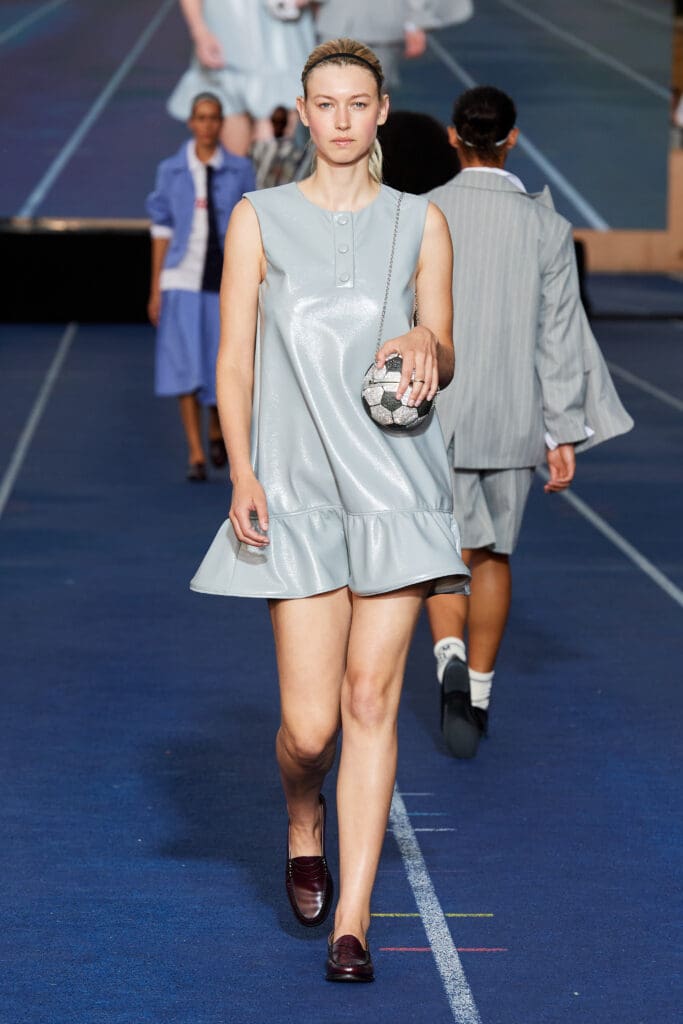
Baum und Pferdgarten SS25

Baum und Pferdgarten SS25
Not one designer — Kristoffer Kongshaug of Forza Collective, or Skall Studio’s Julie and Marie Skall, or Sanne Sehested of Gestuz, or Rikke Baumgarten und Helle Hestehave of Baum und Pferdgarten — offered more than a bit of feminine volumes and perhaps breezy silhouettes.
Forza Collective based its collection on the juxtaposition and interplay between severity and softness, exploring the 1960s couture period and marrying these elements with a minimalistic touch that embodies its vision. The show had a punchy and dynamic colour palette, drawing the viewer to engage with local figures such as Danish actress Ellen Hillingsø and ballet dancer Cecilie Lassen, who featured among the cast to embody “the strength and energy that are synonymous with the Forza Collective woman, a woman who is strong and soft at the same time.”
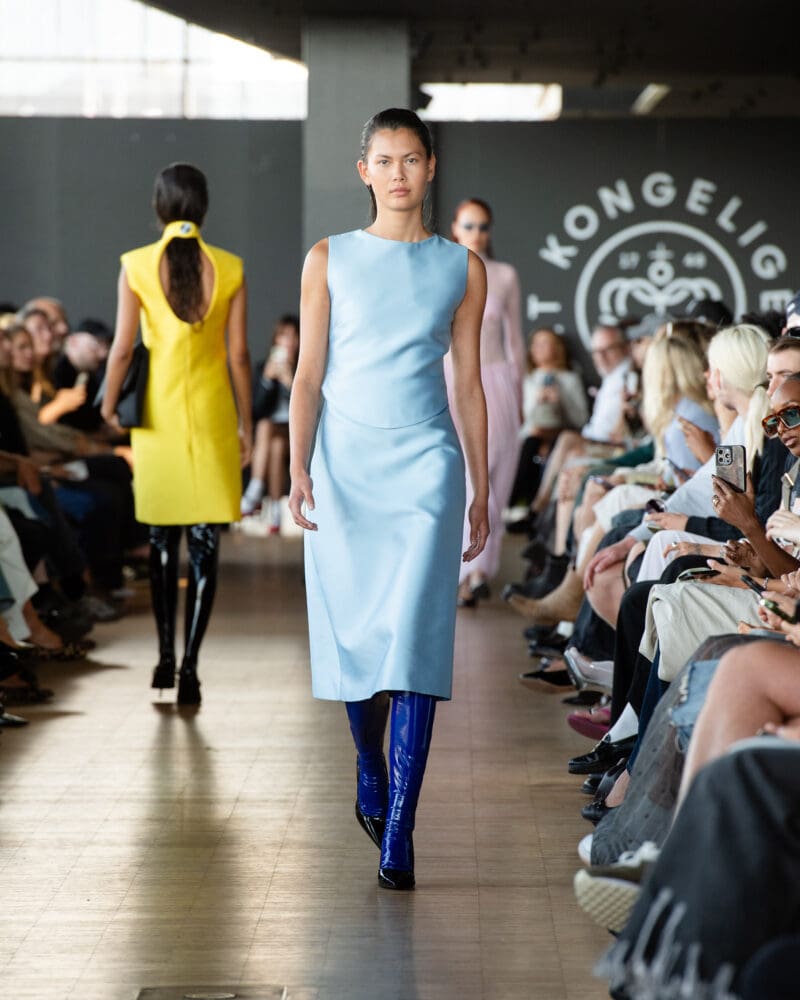
Forza Collective SS25
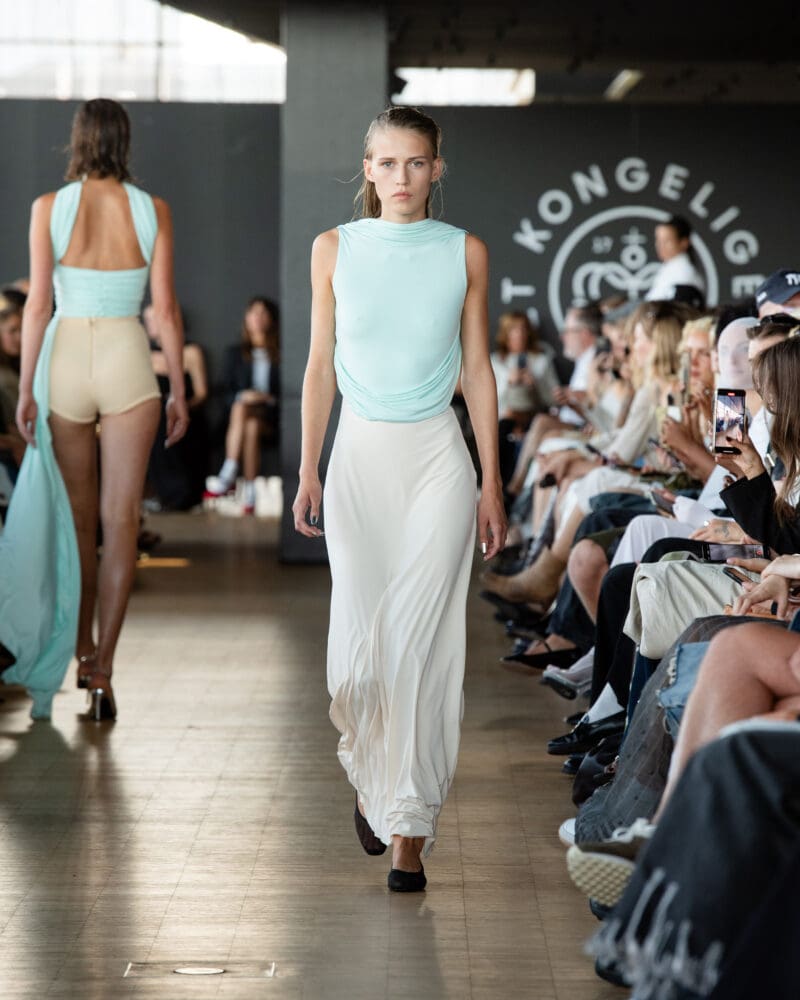
Forza Collective SS25
I barely sensed any of that, as the previous season was predominantly black with the same louche shapes seen across billowing gowns, classic gently-volumised breezy toppers, and a reworking of a traditional style (this season, tons of no-shoulder dresses gravitated towards softer thread of utility, which brought a refreshing change to the mix): the sound that accompanied the show was fast-paced, but also heavily inspired by the past.
There was high praise for simplicity that displayed ample sluggishness, restraint and a lack of vision this season. Case in point: A. Roege Hove’s collection which was, yet again, inspired by the principles of the female body and for Spring, she brought forth outfits that built on previous nods to form.
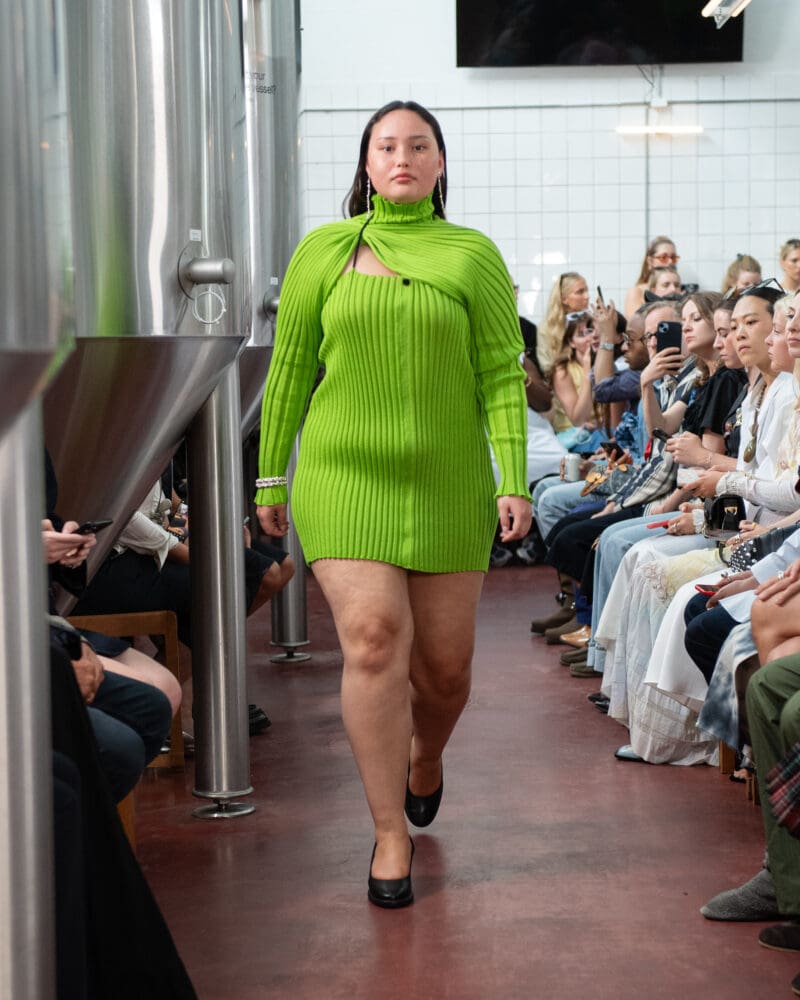
A. Roege Hove SS25
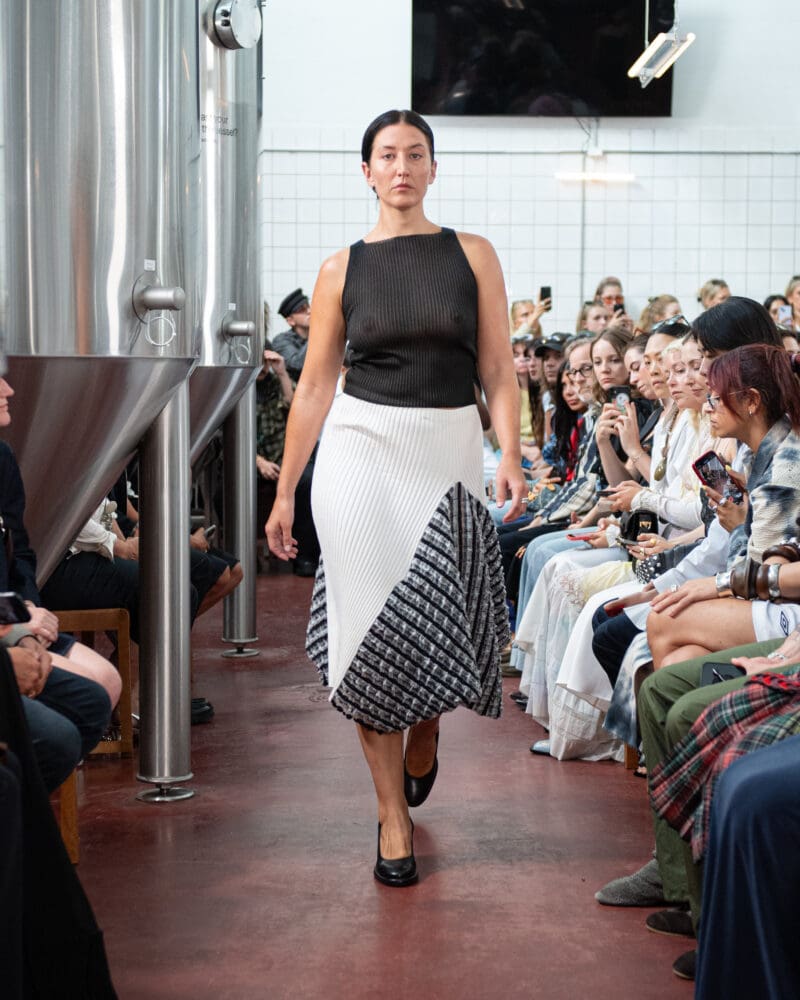
A. Roege Hove SS25
“For this collection, I was inspired by framing the female body, working on the principles of iterations and starting from the strict lines of the rib to a messier, almost disturbed line caused by the body,” stated the designer. The show was simply a colourful mashup of precursory knits, with no clear direction or excitement worthy of note.
On similar territory, Won Hundred’s Nikolaj Nielsen challenged the beauty of imperfection and explored the body through a plethora of denim staples which—let’s be honest— didn’t provide much newness to its existing range, nor were as creative as its counterparts fashioned at Stamm. Skall Studio’s tailored waistcoats and classic wide pants paired with oversized summer hats, feminine midi-skirts, and loose vintage-inspired bohemian shirts were pleasing, but again it was easy to get lost in their conformity given their plain, fuss-free appeal.

Won Hundred SS25
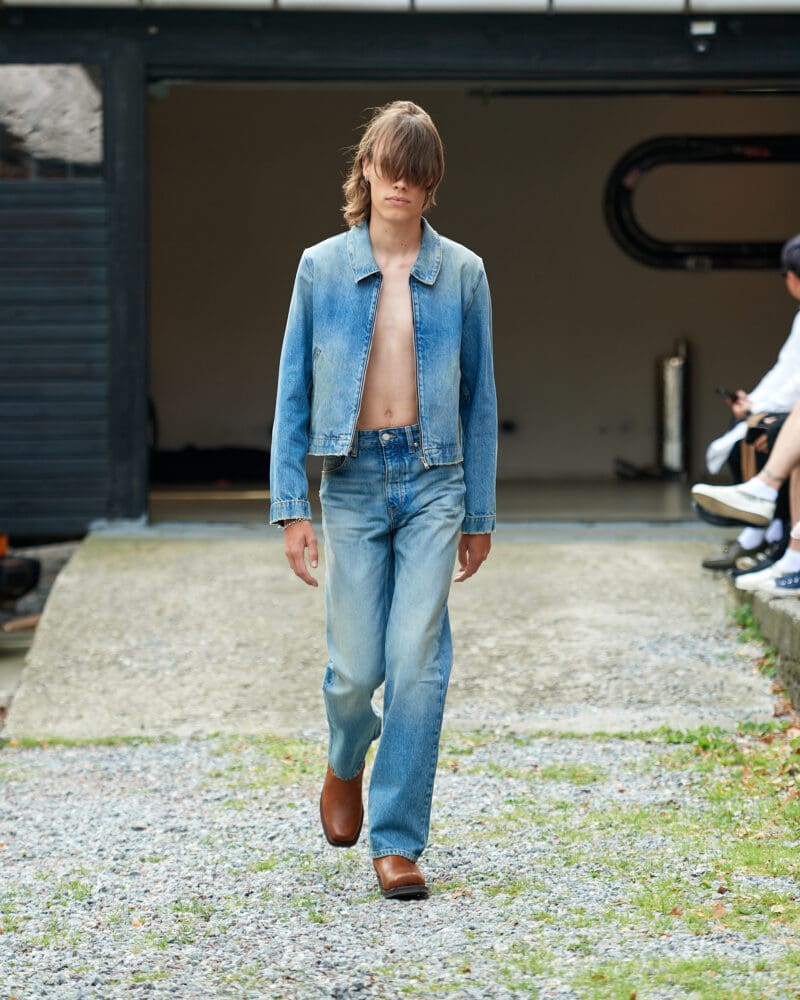
Won Hundred SS25
Speaking of which, Gestuz and Baum und Pferdgarten- known for their quirky take on female dressing, coveted by the Scandi girl—offered garments that nodded onto the familiar with little-to-no experimentation and progressiveness, lost in the expanse of a sports court or a rock-band. In short, Copenhagen needs to boost its creative lever a tad.

Henrik Vibskov SS25
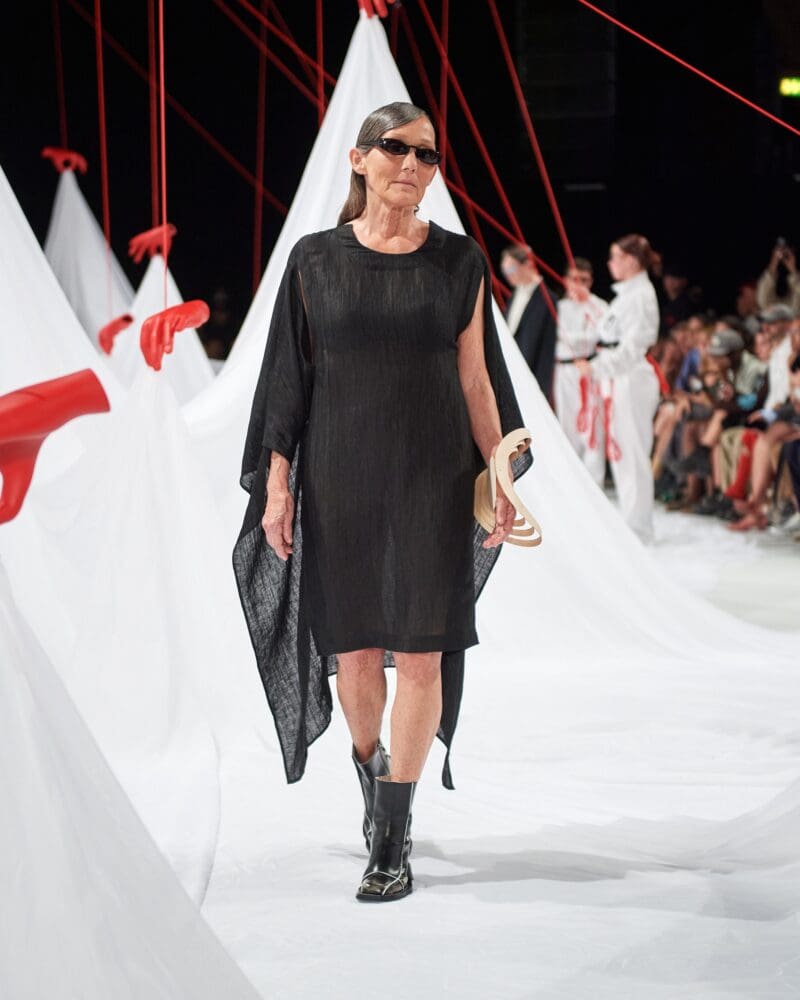
Henrik Vibskov SS25
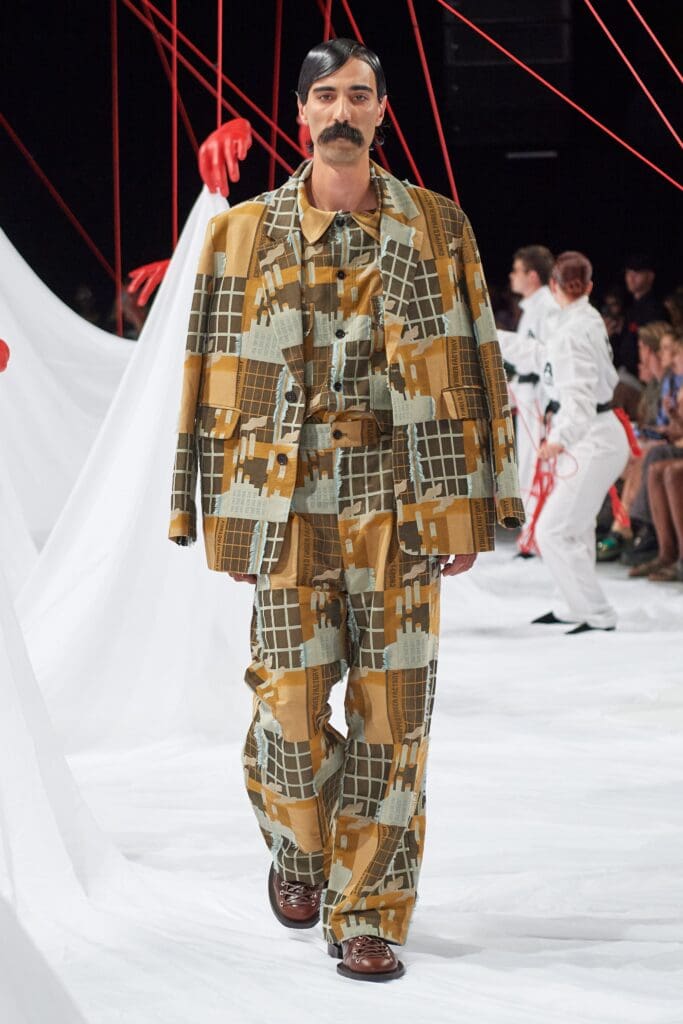
Henrik Vibskov SS25
Many designers, though, have managed to excel in comfort and newness simultaneously, and such happened at Henrik Vibskov, who made a difference and it’s clear by the show’s staging. It gets better and better. Through urbane tailoring and well-cut, two-toned separates, Vibskov’s spring outing was a welcome respite amid the poverty of imagination. Spring harmonised the elegance of human empathy with the genius of the animal kingdom, with a study of hands the ultimate symbols of assistance, compassion, and adaptability.
“Spring-Summer 2025 has been a season with quite a narrow developing time,” opines MARKE’s Creative Director Mario Keine, who likes collections and products to reflect the Zeitgeist, paying homage through the elaboration of details.
“In such a short period of time, it’s challenging to create something that does justice to the current world affairs, especially while feeling overwhelmed by the frightening tendencies in the world. Personally, so far, I see in this season’s outings that it’s either shouting loudly to make a statement or seeking hold and security by creating something safe and sober. There have been some amazing works I’ve seen that put wonderful thoughts and critical approaches in silent and refined outings. Unfortunately most of the time they have been overshadowed by some megaphone collections that got all the attention.”
Driving home full points on the side of progress, some designers have marked a positive change in the Danish capital this season. “Those that pushed the envelope the most were the younger talents such as Sinéad O’Dwyer and Alectra Rothschild,” continued Litzinger.
Similarly, New York-based editor Jasmine Fox-Suliaman points to the fact that even though Copenhagen collections have always felt cutting-edge in their approach in every aspect, one thing that was lacking this season was size-inclusive looks that showcased designers’ skills.
“While the percentage of Spring 2025 runway looks featuring different body types was higher than in other cities—nine out of the thirty-five brands had curvy models wearing something from their collections—it doesn’t negate that even with slightly more representation on the runway, few designers challenged themselves to create looks for their curvier models that weren’t oversized silhouettes.
Sure, there were plenty of pretty looks, but the effort to push themselves was perfunctory at best,” Fox-Suliaman opined, adding, “Possibly the only brand that seemingly had an exciting approach to curves outside a shapeless sundress or oversized separates was Sinéad O’Dwyer’s show.”
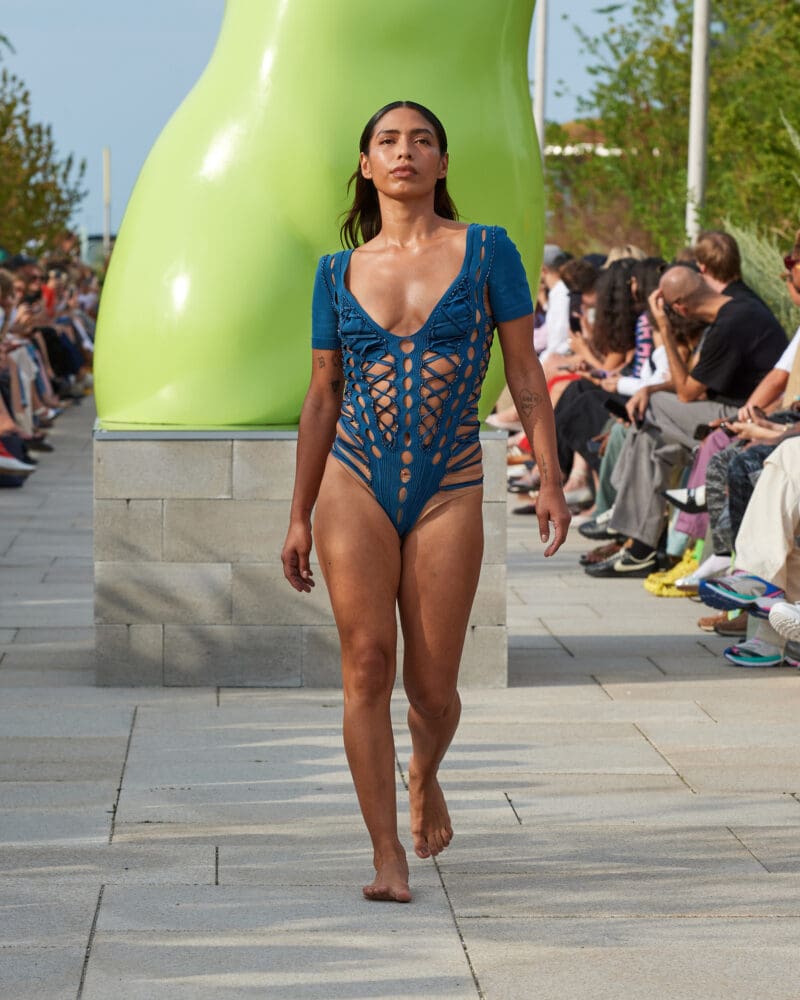
Sinéad O’Dwyer SS25

Sinéad O’Dwyer SS25

Sinéad O’Dwyer SS25
By playing with pleats, keyholes, and tailoring, the brand showed us there’s no one-size-fits-all approach to designing for curves—something which the rest of the fashion world could head. These aspects matter today, and can no longer be brushed aside.
“Models on the runway have never been this inclusive, and a model who stepped out of the runway by her guide dog—Lucy Edwards—the first blind person to model at Copenhagen Fashion Week (precisely at Sinéad O’Dwyer’s show, part of Zalando Visionary Award) was a reassuring step towards a hopeful future,” said Aram Ostadian-Binai, Chief Executive Officer at award-winning social mobility platform The Soulfuls and board member of the Danish Fashion Ethical Charter, who uses her role to cultivate a positive and inclusive future in the Nordic fashion industry through mentorship and networking aimed at young women from all backgrounds.
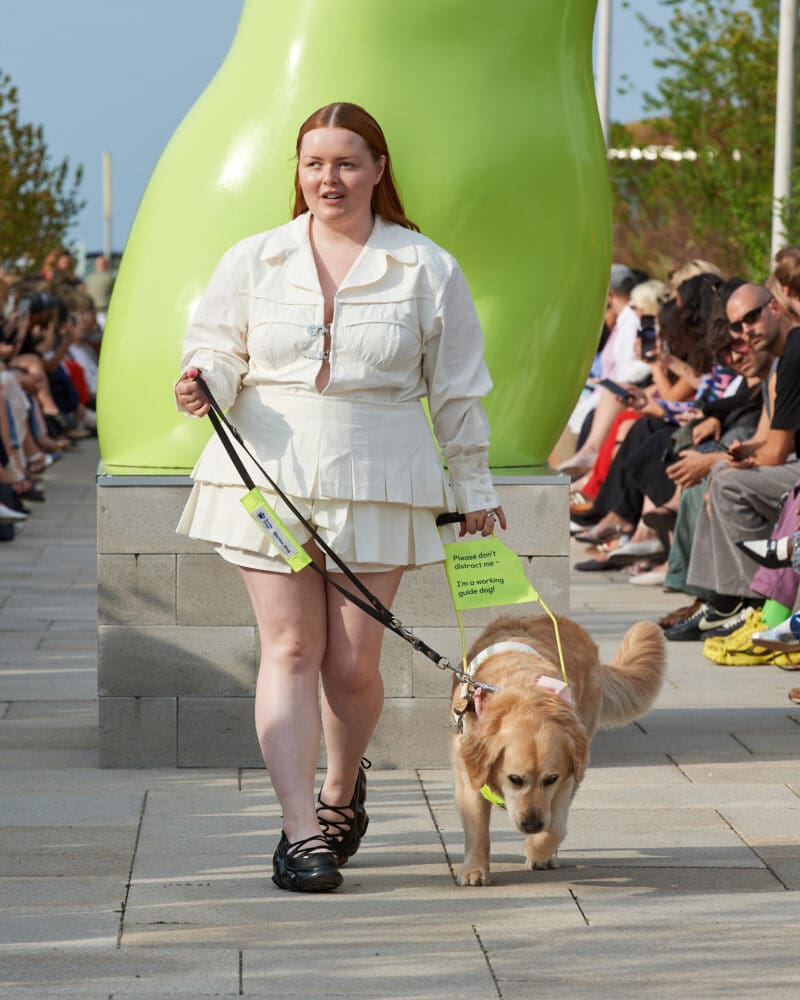
Sinéad O’Dwyer SS25

Sinéad O’Dwyer SS25
“Copenhagen Fashion Week is stepping up its game with diversity on the runway, meanwhile you hear the industry globally becoming more relaxed with their diversity and inclusion efforts; I’m still left with the feeling that many visit Copenhagen and see the diversity in photographers, street styles, events and shows—thinking it might feed into our reality. But the truth is that the real game change happens when you see this fairy tale of a diverse and inclusive industry up and across different layers —from local media to people behind the chains of brands.”
Overall, the simplicity and practicality of the Danes resonate well today because they detach from all manner of excess, fitting into a consumerist economy that eulogises wardrobe classics with a fuss-free edge. These elements also reflect what real people (and not just those in their 20s) want to wear.
This season, what didn’t come true was a fresh perspective and point of view for these young designers. That will presumably unfold past a time of uncertainty and recession, suggesting another ground-shifting theme: how to propose fashion that sticks to tradition while sailing through a cutting-edge intent. As the sensationalist anthem goes, people will find that “amazing,” too.
by Chidozie Obasi
